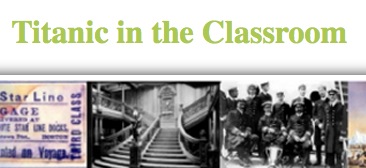Project and Problem-based Learning
Project-based learning blends traditional subject-matter goals and objectives with authentic learning environments. Project-based learning is an approach to learning focusing on developing a product or creation. The project may or may not be student-centered, problem-based, or inquiry-based.
Problem-based Learning
 Problem-based Learning is an approach to learning focusing on the process of solving a problem and acquiring knowledge. The approach is also inquiry-based when students are active in creating the problem.
Problem-based Learning is an approach to learning focusing on the process of solving a problem and acquiring knowledge. The approach is also inquiry-based when students are active in creating the problem.
According to John Barell (1995), problem-based learning contains the following elements:
- Identify the situation or problem.
- What do we think we know about it?
- What do we need to find out?
- What is interesting or intriguing about this situation? Why?
- What do I personally want to find out more about?
- Determine how and where we can get the information.
- Which sources will provide information we need?
- How might we locate these sources?
- Which strategies will help us find the information most efficiently?
- Collect and discuss initial evidence.
- What is the information telling us?
- Are the sources reliable?
- Is there bias?
- Is the information firsthand or from a secondary source?
- Is it objective?
- Do we need to reconsider our original questions and goals?
- Continually monitor progress.
- How well are we doing?
- Do we need to revise our goals or strategies?
- Plan for use of information.
- What conclusions have we reached?
- What is the most appropriate way to communicate our findings?
- How shall we organize data?
- How do we divide responsibilities and agree on deadlines?
- Reflect on efforts.
- How well did we do?
- What did we learn about the problem studied?
- What skills did we learn?
- What did we learn about ourselves?
- How well did we work with others?
- What would we do differently next time? Why?
In the chapter Empowered Learning in Curriculum Connections through the Library edited by Stripling and Hughes-Hassell, Violet H. Harada (2003, p. 57) identified steps in designing problem-based learning experiences with teachers:
- Identify the thinking processes inherent in the content standards and in information literacy.
- Offer to write up the unit plans that result from collaborative planning. Documentation is an important part of the process.
- Work with teachers to extend learning communities.
![]() Read Profile of a Problem-based Project - Elementary and Secondary (PDF) by Violet H. Harada in Empowered Learning in Curriculum Connections through the Library edited by Stripling and Hughes-Hassell
Read Profile of a Problem-based Project - Elementary and Secondary (PDF) by Violet H. Harada in Empowered Learning in Curriculum Connections through the Library edited by Stripling and Hughes-Hassell
Project-based Learning
The project-based approach provides a meaningful direction, the problem-based approach brings meaning for students, the inquiry approach helps students become more aware of their environment, and the multiple intelligences address individual needs and interests. The WebQuest environment combines these ideas together into a meaningful project. Explore these approaches as background for developing effective information skills activities.
![]() Explore the Titanic in the Classroom project. This is a wonderful example of project-based learning.
Explore the Titanic in the Classroom project. This is a wonderful example of project-based learning.
![]() Explore Teacher Tap: Project, Problem, and Inquiry-based Learning.
Explore Teacher Tap: Project, Problem, and Inquiry-based Learning.
 View Integrated Project-based Learning (1:18).
View Integrated Project-based Learning (1:18).
In this video, a teacher discusses the value of an integrated, project-based approach to learning. The importance of linking facts and ideas to a meaningful project such as a Medieval event is stressed. - Excerpt from “SOAR: A Reading Collaboration” by IU Ed Services
Use of this video clip complies with the TEACH act and US copyright law. You should be a registered student to view the video.
![]() Read Key Word: Project-based and Social Action Learning in THE BLUE BOOK by Callison and Preddy, 496-501.
Read Key Word: Project-based and Social Action Learning in THE BLUE BOOK by Callison and Preddy, 496-501.
Key Words
- Key Words: Schema and Problem Solving
- Key Words: Project-based and Social Action Learning
- Key Words: Problem Solving
Learn More
The Big List on Project-based Learning from edtopia
